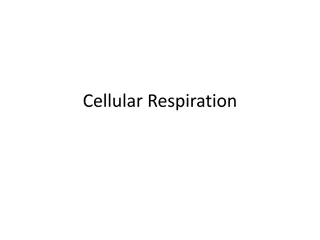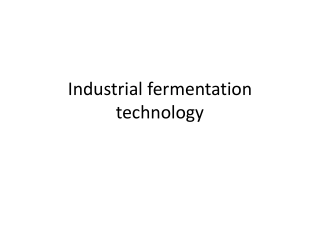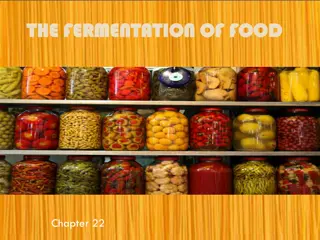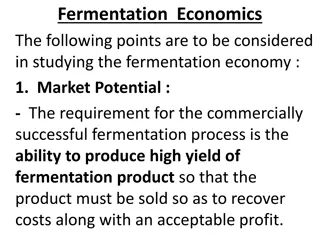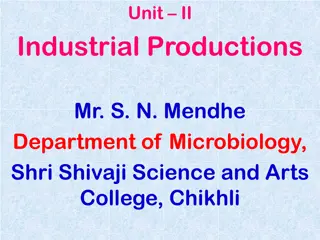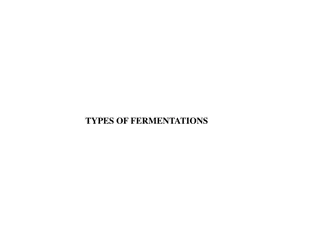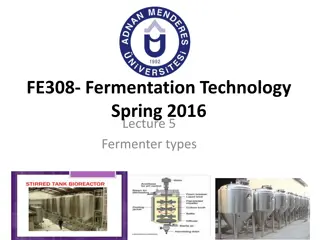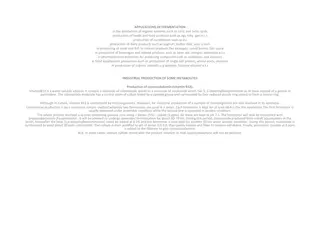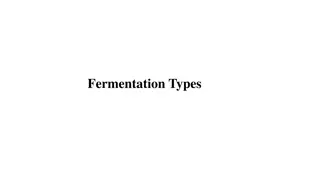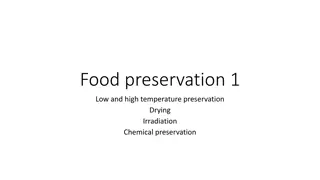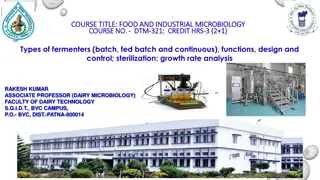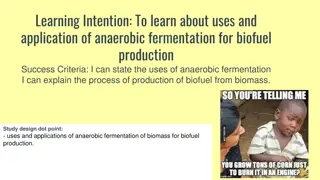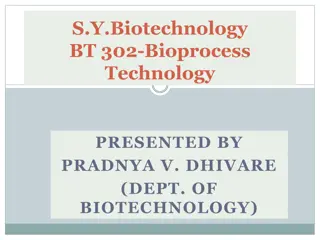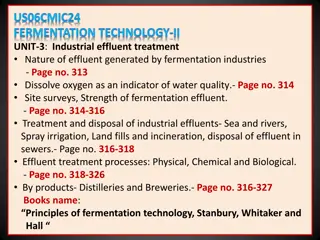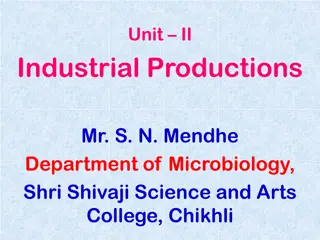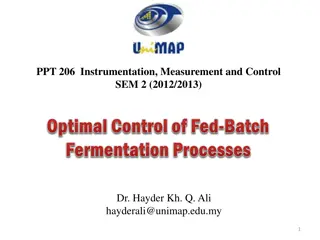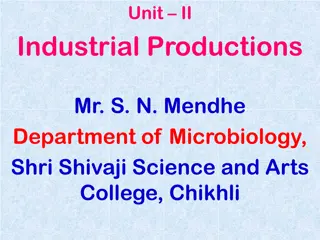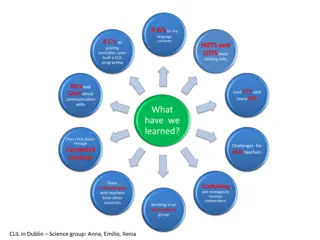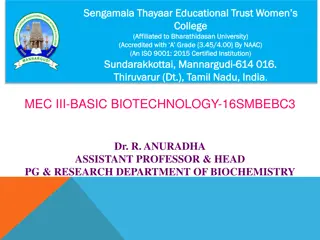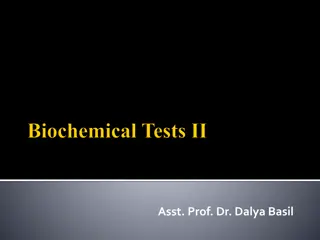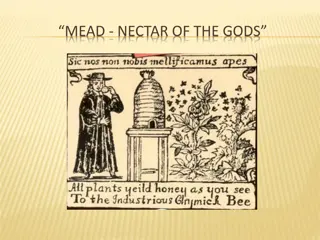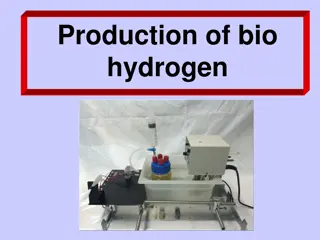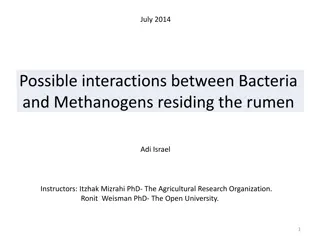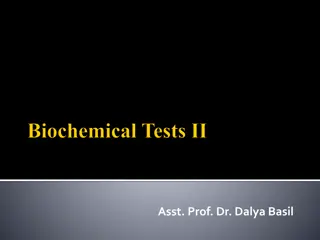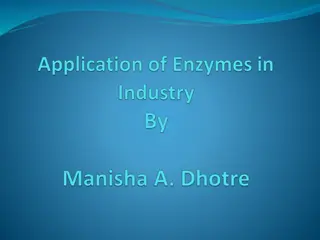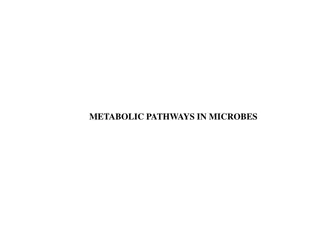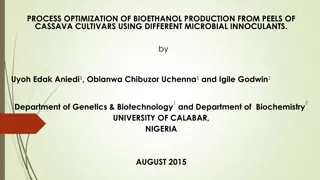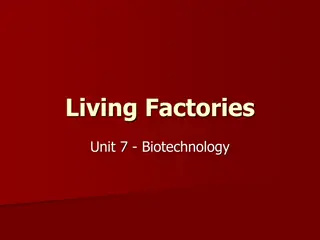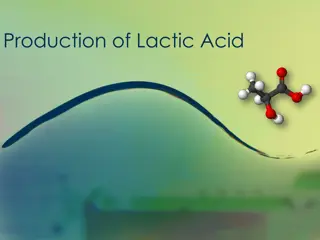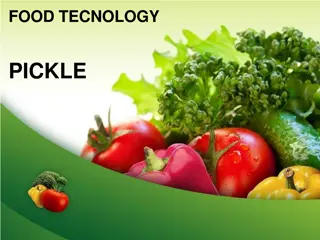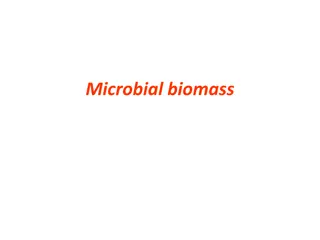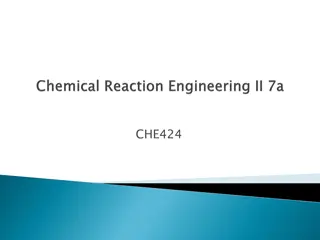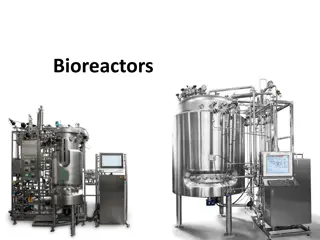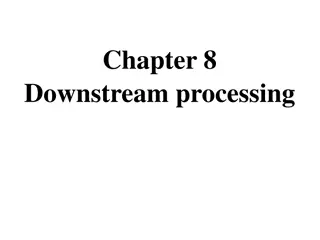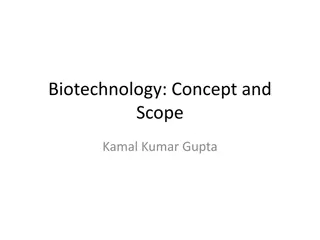Overview of Different Types of Fermentation Processes
Explore the various types of fermentation processes including batch fermentation, fed-batch fermentation, continuous fermentation, solid-state fermentation, anaerobic fermentation, and aerobic fermentation. Each process has its own advantages and disadvantages, influencing factors such as sterilization, nutrient addition, and product yield. Batch fermentation is a discontinuous process requiring cleaning between batches, while continuous fermentation involves continuous nutrient addition and product recovery. Fed-batch fermentation combines elements of both batch and continuous processes, with controlled feeding leading to higher biomass and product yields.
Download Presentation

Please find below an Image/Link to download the presentation.
The content on the website is provided AS IS for your information and personal use only. It may not be sold, licensed, or shared on other websites without obtaining consent from the author. Download presentation by click this link. If you encounter any issues during the download, it is possible that the publisher has removed the file from their server.
E N D
Presentation Transcript
TYPES OF FERMENTATION 1.Batch types fermentation 2.Fed batch fermentation 3.Continuous fermentation 4.Solid state fermentation 5.Anaerobic Fermentation 6.Aerobic Fermentation 2
BATCH FERMENTATION: Batch fermentation is a discontinuous process and the fermentor has to be cleaned after each process and a fresh batch started. It includes the following 5 steps: 1.Mediumadded 2.Fermentor sterilised 3.Inoculumadded 4.Fermentation followed to completion 5.Culture harvested. 3
Characteristics of a batch fermentation system Simplest fermentor operation Sterilisationcan be performed in the reactor. All nutrients are added before inoculation . Maximum levels of C and N are limited by inhibition of cell growth. Biomass production limited by C/N load and production of toxic waste products. 4
Advantages Used where end product required in more quantities at a given period of time. Useful where the shelf life of the end product is short. Useful specifically for the product produced only at the stationary phase. 5
CONTINUOUS FERMENTATION It is a continuous process where the nutrient is continuously added to the fermented at a fixed rate. The organisms are continuously maintained at logarithmic stage. The products are recovered continuously. The fomenters in this type are called flow through fermentation. 6
Disadvantages of continuous fermentation Complete sterilization is difficult. More prone to contamination. 7
FED BATCH FERMENTATION This fermentation is intermediate of both batch and continuous fermentation. Sterile nutrients are added in increments . 8
Characters of fed batch fermentation. Initial medium concentration is relatively low. Medium constituents are added continuously or in increments. Controlled feed results in higher biomass and product yields. Fermentation is still limited by accumulation of toxic end products. Finally the products are harvested in one stroke. 9
SOLIDSTATE FERMENTATION The growth of microorganisms on moist solid substrate particles in the absence or mere absence of visible liquid water between the particles. The moisture content of solid substrate ranges between 12-80%. The water content of a typical submentation is more than 95%. 10
SSFs are usually used for the fermentation of agricultural products or foods, such as rice, wheat, barley, corn and soybeans. Some food fermentations involving SSF: Wheat by Aspergillus Soybean by Rhizopus Soybean by Aspergillus 11
Phases of solid state fermentation . The are 3 phases: 1.Solid phase Solid phase of are two type: (i) Natural solid materials (ii) An inert solid support 2. Liquid phase 3.Gaseous phase 12
Characteristics of solid state fermentation 1) The substrate may require preparation or pretreatment like, Chopping or grinding-reduce particle size. 2)Microorganism is usually a filamentous fungus requiring aerobic condition. 3)The Inoculum is mixed into substrate to fermentation. 4)Cooking or chemical hydrolysis. Pasteurization or sterilization-reduce contaminants. 13
Advantage of SSF A lower chance of contamination due to low moisture levels. Ease of product separation. Energy efficiency. Development of fully differentiated structures. 14
Disadvantage Heterogeneous nature of the media,due to poor mixing characteristics. At high agitation speeds mycelial cells may be damage. Rotary-tray or rotating-drum fermenters are often used. 15
Anaerobic Fermentation In anaerobic fermentation, a provision for aeration is usually not needed. The air present in the headspace of the fermentor should be replaced by CO2, H2, N2 or a suitable mixture of these. The fermentation usually liberates CO2 and H2 Recovery of products from anaerobic fermenters does not require anaerobic conditions. . 16
Aerobic Fermentation The main feature of aerobic fermentation is the provision for adequate aeration. In addition, these fermenters may have a mechanism for stirring and mixing of the medium and cells. Aerobic fermenters may be either of the i) stirred tank type in which mechanical motor driven stirrers are provided or (ii) of air lift type in which no mechanical stirrers are used and the agitation is achieved by the air bubbles generated by the air supply. 17
THANK YOU 18


